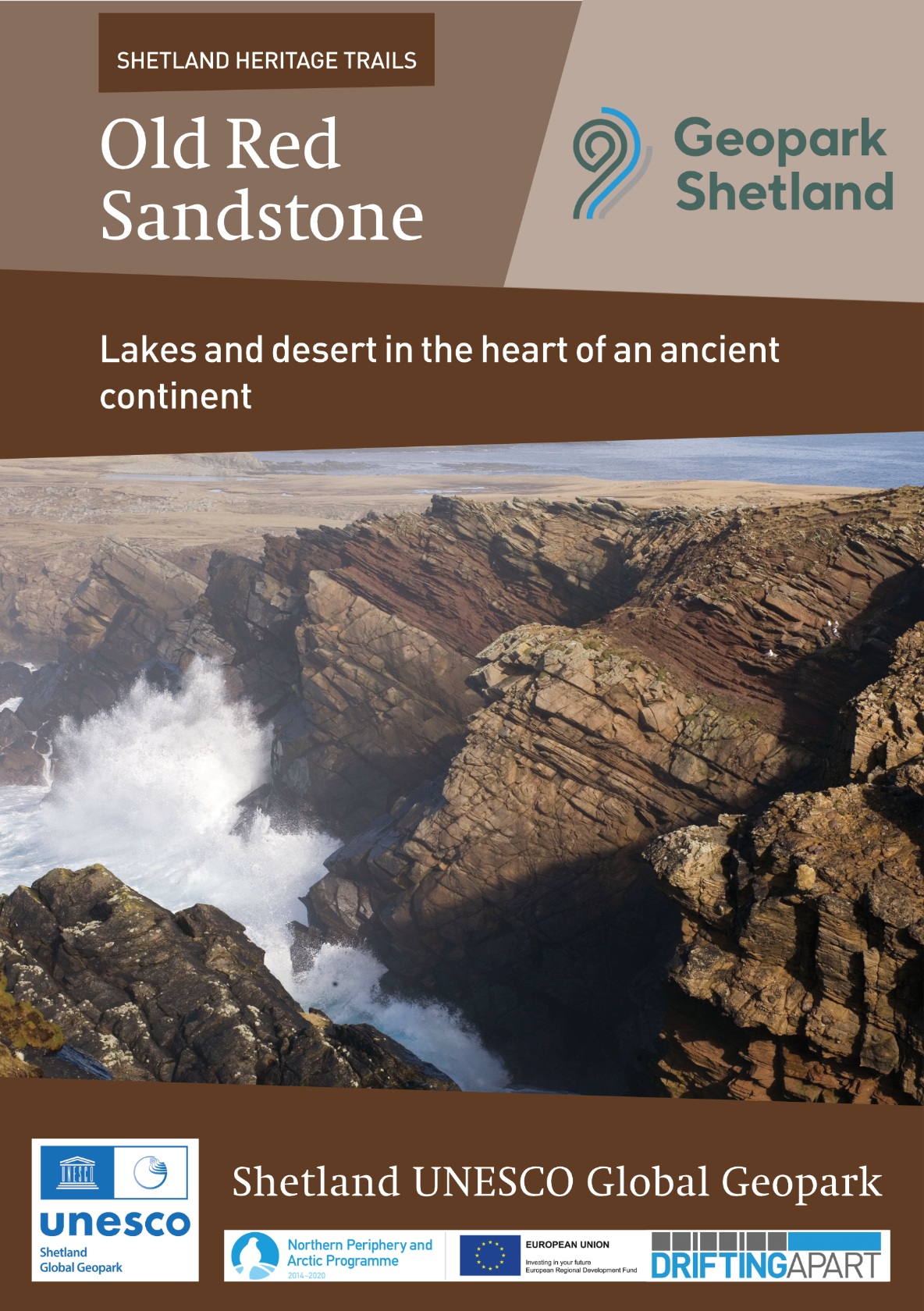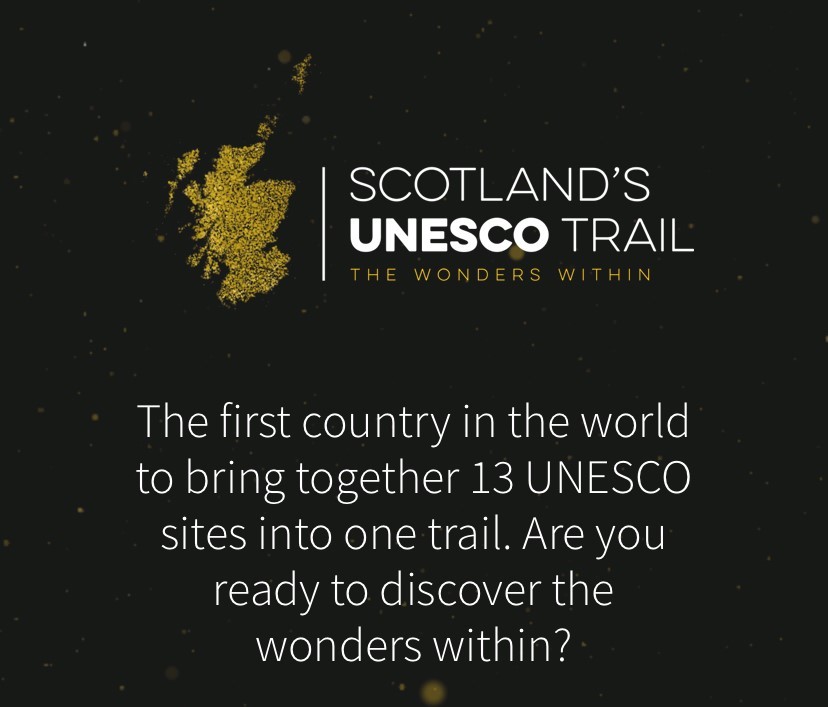Trails and Exhibits
Scotland's UNESCO Trail
The first country in the world to bring together 13 UNESCO sites into one trail. Are you ready to discover the wonders within?
Explore the Shetland part of the trail at:
https://www.visitscotland.com/see-do/unesco-trail/designations/geopark-shetland/
Journey into Shetland's Volcano
This self-guide trail explores the volcanic landscape of Eshaness. The Eshaness peninsula is formed from the remains of a large volcano that was active between 400 and 350 million years ago. Now one of the highest-energy coastlines in the world, the sea has exploited cracks in the volcanic bedrock to carve out the dramatic array of stacks, geos and blowholes you can see today. The trails include a number of walks and site visits. They are supported by on-site interpretation at several locations.
The trail pack is available from the Shetland Museum and Archives in Lerwick or can be downloaded below:
Volcano Trail: Useful Information
Volcano Trail: Access Information
Volcano Trail 1: Mavis Grind - in the heart of the volcano
Volcano Trail 2: Braewick beach
Volcano Trail 3: Stennes beach and Tangwick Haa Museum
Volcano Trail 4: Eshaness coast
Explore the Shetland ophiolite - the floor of an ancient ocean
This self-guided trail takes you on a journey to the bottom of an ancient ocean. The Shetland ophiolite is a stranded section of ocean crust that was thrust up onto an ancient contient during a massive collision some 420 million years ago. The islands of Unst and Fetlar are formed partly from this ancient contient, and partly from oceanic crust. The trails include a number of walks and site visits. They are supported by an exhibition and geology wall at the Unst Heritage centre as well as on-site interpretation at several locations.
The trail pack is available from the Shetland Museum and Archives in Lerwick or can be downloaded below.
Ophiolite Trail: Useful Information
Ophiolite Trail: Access Information
Ophiolite Trail 1: Unst Heritage Centre
Ophiolite Trail 2: Norwick, Hermaness and the Keen of Hamar
Ophiolite Trail 3: Hagdale and the Heogs
Ophiolite Trail 4: Sobul and Watlee Burn
Ophiolite Trail 6: Funzie to Staves Geo
Discover Shetland's Old Red Sandstone
This self-guided trail takes you back 370 million years to the Devonian Period. The Old Red Sandstone lowlands would have been a barren place of shifting sands and seasonal floods. Plants had hardly begun to colonise the land and the ground would have been bare, apart from fringes of strange green vegetation along riversides and lake margins. The land may have been empty, but the lakes teemed with life, including strange fish that were ancestors of the amphibians and reptiles, and so ultimately of humans too.

The trails include a number of walks and site visits. They are supported by on-site interpretation at several locations.
Old Red Sandstone Trail: Folder
Old Red Sandstone Trail: Introduction
Old Red Sandstone Trail 1: Quarff
Old Red Sandstone Trail 2: Lerwick
Old Red Sandstone Trail 3: Bressay
Old Red Sandstone Trail 4: Scatness
Old Red Sandstone Trail 5: Exnaboe
Old Red Sandstone Trail 6: Sandlodge
Shetland's geological jigsaw
 Geoexhibit, Braewick Cafe. Copyright Robina BartonZoom
Geoexhibit, Braewick Cafe. Copyright Robina BartonZoom
Visitors to Braewick Cafe in Eshaness will find a 'table and chairs' with a difference. The exhibit illustrates the way that Shetland's rocks came together over nearly 3000 million years, rather like a massive geological jigsaw. Each of the 'chairs' is built from rock representing a key part of Shetland's geological formation. They surround an interpretive 'table' with a colour coded map. The map, which highlights Shetland's geological diversity, can be used to tell age of each rock and where in Shetland it can be found.
How the Inuksuit came to Yell
 How the Inuksuit came to YellZoom
How the Inuksuit came to YellZoom
Exhibits at the Old Haa in Burravoe celebrate the beauty and diversity of the Rocks of Yell. A series of stone figures built in the style of Inuit 'inuksuit' can be found in the Old Haa Garden. The Inuit use inuksuit as waymarkers and aids to navigation. Each figure is built from a different type of rock.
The Inuit theme was chosen because most of Yell's rocks were formed about 900 million years ago when Yell was part of what is now North America. The island also boasts some of Shetlands oldest rocks which are about 2900 million years old. An exhibition within the museum entitled 'Yell - it's Moine and it's Gneiss' illustrates Yell's geological story. Audio commentaries about the rock types represented were written and recorded by the pupils of Burravoe school. Further museum displays highlight Yell's cultural links with North America through whaling and the Hudson’s Bay Company.
 Mica Schist Inuksuk - Old Haa Garden. Copyright Robin Barton.Zoom
Mica Schist Inuksuk - Old Haa Garden. Copyright Robin Barton.Zoom
A project booklet about Yell's geology, developed with the help of the Burravoe school pupils, is available to purchase at the Old Haa. The booklet was funded by Museums and Galleries Scotland.








